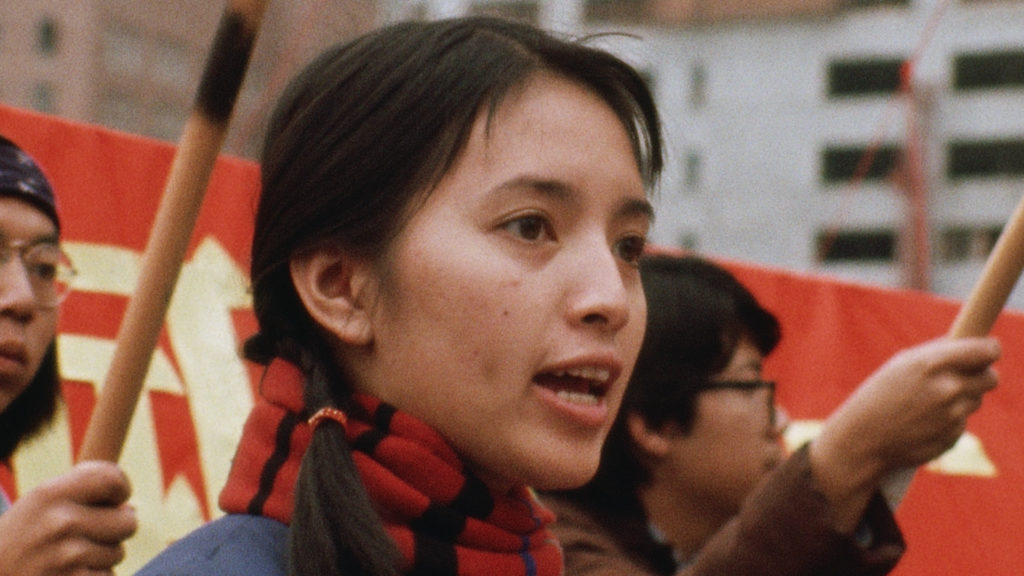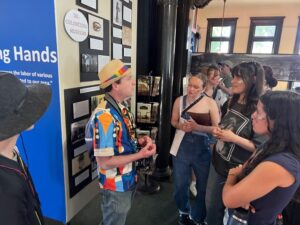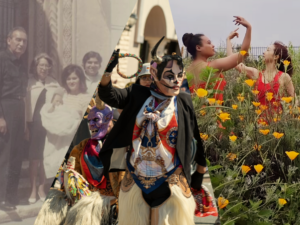May is Asian Pacific American heritage month. At California Humanities, we’re celebrating the stories of Asians and Pacific Islanders in California, from films to farms, dances to discussions, mapping to music. Here’s a selection of just a few recent projects that reflect the richness and history of these diverse communities.
Film screenings and world premieres on both coasts
In San Francisco, two California Humanities-supported films bookend CAAMFest, the world’s largest showcase of new Asian American and Asian film, food, and music programs. The festival opens with CHINATOWN RISING, a documentary 40 years in the making, highlighting one of the birthplaces of the Asian American movement. The film includes Harry and Josh Chuck’s never-before-seen photos and archival footage taken during the Civil Rights movement over two decades, following the growth of the activist movement led by young people from San Francisco’s Chinatown.
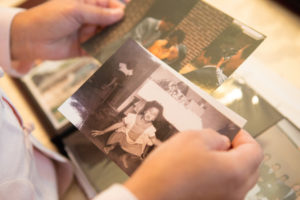
Another California Documentary Project grant recipient—filmmaker Deann Borshay Liem—is highlighted this year with two screenings at CAAMfest. On May 18 is a free public showing of her seminal film FIRST PERSON PLURAL at the San Francisco Public Library, which chronicles her own story of adoption from Korean into a white American family. Then comes the world premiere of GEOGRAPHIES OF KINSHIP as the festival’s closing night film. This feature-length documentary about the legacy of the Korean war through the story of adoptees in California and abroad, as they search for their birth families and stories that connect them to the Korean continent and to each other.
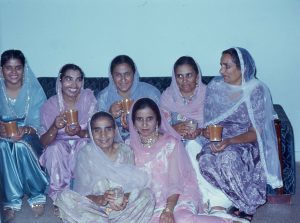
As a part of the Punjabi American Women Oral History Project, meant to capture the stories of the significant Punjabi American community in Sacramento Valley, UC Davis historians interviewed 36 Punjabi American women in the remote rural Yuba City area and recorded 12 women performing Punjabi folk songs about important life cycle events. The work resulted in documentary film WALKING INTO THE UNKNOWN (JUTTI KASOORI): A HISTORY OF PUNJABI WOMEN IN CALIFORNIA, which is now available online and screening all over the state in events supported by a Humanities for All Project Grant. The videotaped interviews, photographs, and transcripts were shared with researchers and audiences worldwide through the existing UC Davis Pioneering Punjabis Digital Archive. A screening of the film takes place this month on May 4 in Davis.
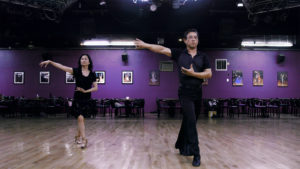
And if you’re on the East Coast, a California Humanities-supported documentary, WALK RUN CHA-CHA, had its world premiere at Tribeca in late April. The film follows the story of Paul and Millie Cao who lost their youth to the aftermath of the war in Vietnam. Forty years later they rediscover themselves on the dancefloor of a studio in Southern California. More screenings and broadcast to be announced!
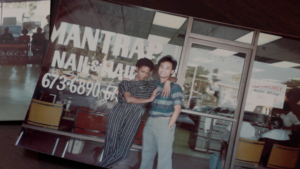
And a national broadcast of California Documentary Project-supported film NAILED IT! takes place on May 7 on America ReFramed. In every city, state, and strip mall across the US, people get their nails done in salons likely owned by Vietnamese entrepreneurs who’ve come to dominate an $8 billion dollar nail economy. This film documents how it all began with 20 refugee women and a chance encounter with famed Alfred Hitchcock actress and humanitarian Tippi Hedren. Part of the first wave of war refugees in 1975, the “first 20” Vietnamese manicurists sought a way to support their children and families, unknowingly sparking a cultural phenomenon. Check your local PBS listings for airtimes.
Interdisciplinary Exhibits, Storytelling, and Multimedia Projects
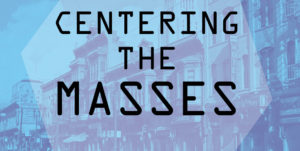
Presented by Visual Communications, CENTERING THE MASSES is a series of free pop-up events and programs at 341 FSN, in the heart of Los Angeles Little Tokyo’s historic district. This nine-week series running from April 5 to May 30, 2019 will bring together artists, cultural workers, entertainment professionals, and civic personalities to celebrate and explore all the ways that motion pictures and media artworks impact our lives. Through intimate conversation, screenings, and visual art presentations, this project will be a space to address the current realities of a community that sits at the crossroads of shifting racial, generational, and economic conditions.
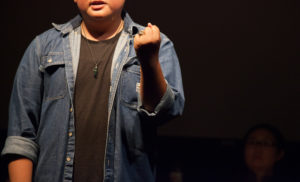
On May 31, enjoy Performing Visible Resilience, an interdisciplinary showcase that features original personal narrative stories from LGBTQ Asian Pacific American artists. On the stage, the Resilience Archives connect personal histories to broader movement history on stage filled with South Asian, Pacific Islander, Southeast Asian, East Asian, transgender, mixed race, and intergenerational performers. On the walls are large scale intimate portraits of the national Queer & Trans APA community curated from twelve years of work from the Visibility Project. As the project director Mia Nakano states, “Queer Trans Asian Pacific Americans have often been ignored, disenfranchised, and silenced. We provide a platform for queer and trans Asian Pacific Americans to share their stories and shift this dynamic. When people see our portraits and hear our stories, they see themselves, they see their family, they see their friends.”
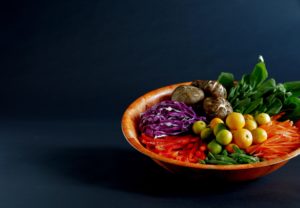
On June 9, join The Rooted Recipes Project and Asian Pacific Islander Cultural Center in San Francisco for a community meal and participatory learning event. Drawing inspiration from teachings of community leaders, ancestors, families, and shared histories as Asian Americans and diaspora communities, the event will pay special attention to using the lens of cultural foods and land-based practices as a tool to build solidarity across movements. Through an afternoon of cooking, storytelling, and interactive stations participants will take part in creating the meal while learning how our collective Asian American and cross-cultural histories have shaped current social movements and can inform how we can work towards justice for all.
Retracing steps: augmented reality and walking tours take us back in time
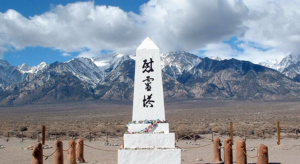
At the Manzanar national historic site of where more than 10,000 Japanese Americans were incarcerated during World War II, a new audio augmented reality project, One Square Mile, 10,000 Voices, will provide visitors the chance to listen to sounds from the past. Geoloating historical and present recordings around the site, a mobile app creates a way to explore its rich oral history and add contemporary reflections. And if you can’t visit in person, a satellite installation in Little Tokyo, Los Angeles, and website will feature adapted versions of this experience. This Humanities for all Project Grant will encourage visitors to engage with both the physical site and its historical archive in new ways, and create a living document of resistance, resilience, and community.
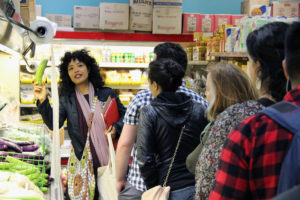
In Los Angeles’ historic Filipinotown (also known as Hi Fi) a Humanities for All Project Grant supports The Chicharrón Chronicles. A series of three story-gathering events with the community this summer will feed into a multimedia walking tour that highlights the sometimes-overlooked bonds between immigrants from the Philippines, Central America, and Mexico in this neighborhood. The stories will tease out the commonalities that begin with fried pig skin (chicharron) and Catholicism and are shared through overlaps in language and labor struggles. The project illuminates the historical, cultural, and social commonalities between these communities, offering visitors and residents alike a dose of insight and delight.
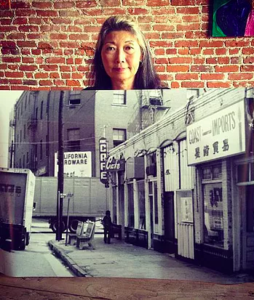
Through a Humanities for All Quick Grant, Asian and Pacific Islander Americans in Historic Preservation held workshops in partnership with APIA community organizations in Los Angeles, San Francisco, San Jose, Stockton, and Riverside. They gathered stories and archival materials, introducing participants to East at Main Street: APIA Mapping Project. During one community session hosted by the Manilatown Heritage Foundation in San Francisco at the former site of the International Hotel, participants learned more about the eviction of the residents and the historic struggle that took place in the 1960s to prevent elder Filipinos from losing their homes. Inspired by this history, workshop participants shared their own stories of resistance, struggle, and efforts to preserve stories and places. Throughout, the project explored the diverse and complex histories of Asian and Pacific Islanders in California through the lens of place-making and historic preservation.

